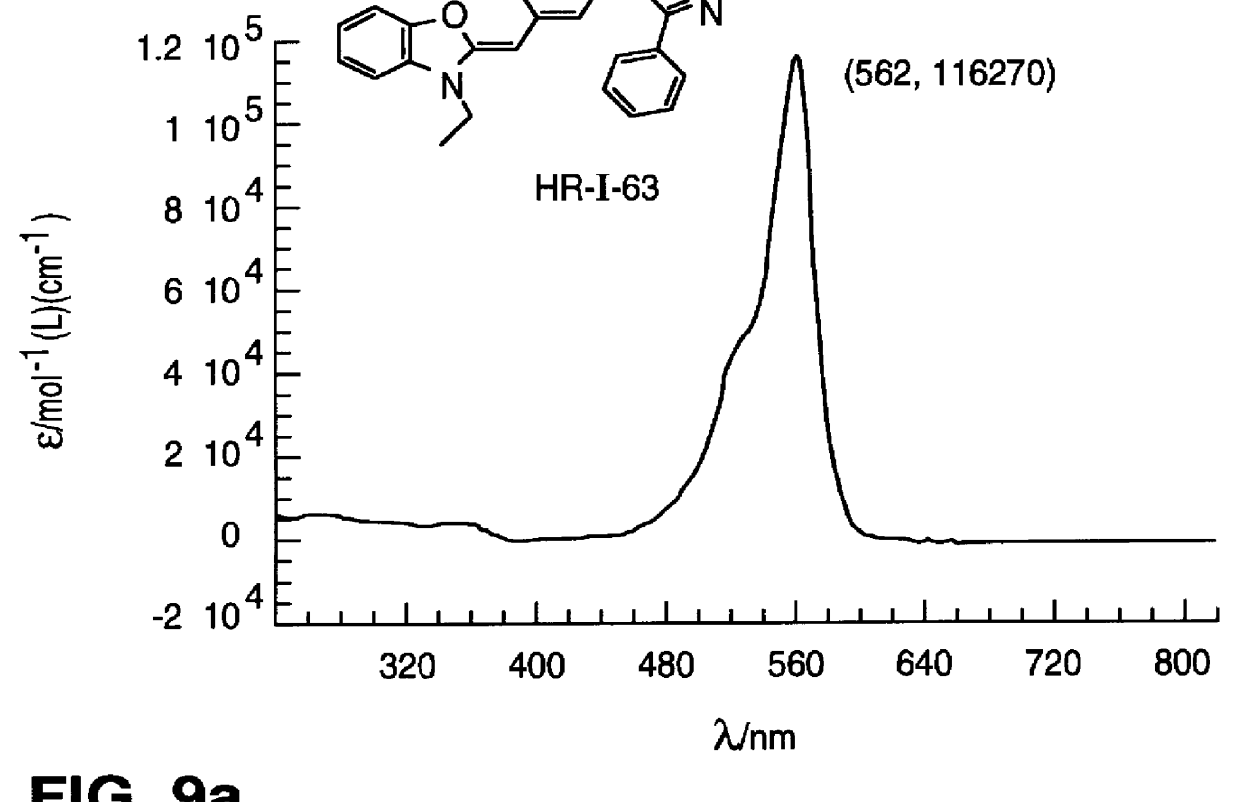Process of changing the refractive index of a composite containing a polymer and a compound having large dipole moment and polarizability and applications thereof
a polymer and composite technology, applied in the field of composite containing polymers, can solve the problem of linear polarization of the molecule, and achieve the effect of reducing the value of the applied field, high refractive index changes, and 100% diffraction efficiency
- Summary
- Abstract
- Description
- Claims
- Application Information
AI Technical Summary
Benefits of technology
Problems solved by technology
Method used
Image
Examples
example 37
Thermally Stable Composites
It is known that even highly efficient photorefractive composites, such as those reported in K. Meerholz, et al., Nature, 371, 497 (1994) have a limited shelf life (see C. Poga, et al., SPIE Proc., 2526, 82 (1995)) because of phase separation of the constituents, in particular the dipolar dopant molecule. In recent years, progress made in improving the shelf life of such composites (see Cox, et al., Appl. Phys. Lett. 68, 2801 (1996)) and A. Grunnet-Jepsen, et al., Appl. Phys. Lett., 70, 1515 (1997)) accompanied degraded performance, such as loss of dynamic range at identical applied field compared with the polymers reported in 1994. Recently, it was shown that by using eutectic mixtures of dopant molecules chromophores (E. Hendrickx, et al., Appl. Phys. Lett. 71, 1159 (1997)), materials with anticipated shelf lives of several years can be obtained without any loss in performance, compared with the photorefractive polymers reported in 1994 by K. Meerholz, e...
PUM
| Property | Measurement | Unit |
|---|---|---|
| Angle | aaaaa | aaaaa |
| Fraction | aaaaa | aaaaa |
| Fraction | aaaaa | aaaaa |
Abstract
Description
Claims
Application Information
 Login to View More
Login to View More - R&D
- Intellectual Property
- Life Sciences
- Materials
- Tech Scout
- Unparalleled Data Quality
- Higher Quality Content
- 60% Fewer Hallucinations
Browse by: Latest US Patents, China's latest patents, Technical Efficacy Thesaurus, Application Domain, Technology Topic, Popular Technical Reports.
© 2025 PatSnap. All rights reserved.Legal|Privacy policy|Modern Slavery Act Transparency Statement|Sitemap|About US| Contact US: help@patsnap.com



